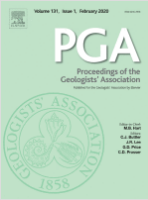“During the Late Triassic and Early Jurassic, the area around Bristol and South Wales was an archipelago of islands occupied by diverse small-sized tetrapods. The largest of these palaeo-islands was Mendip Island, now forming the Mendip Hills, and the location of some famous fossiliferous sites. These sites have not been described in detail before, and we present new data on three of them. Highcroft has yielded only sparse remains of rhynchocephalians, and Batscombe famously the gliding reptile Kuehneosuchus latissimus. Emborough yielded the richest fauna of the three, abundant pseudosuchians including crocodylomorphs as well as the gliding reptile Kuehneosaurus latus, rare trilophosaurs, a probable thalattosaur, rhynchocephalians, and the mammal Kuehneotherium. These include some of the last known taxa of clades that died out in the end-Triassic mass extinction. We report a new taxon of sphenosuchid crocodylomorph similar to Saltoposuchus and a find of Pachystropheus, an aquatic reptile shared with Holwell and the bedded Rhaetian at Blue Anchor Point, Aust and Westbury Garden Cliff. The discovery of a fish vertebra strengthens the model of Emborough fissure filling in a marginal marine location. The Emborough fauna differs from coeval assemblages from Cromhall, Tytherington and Ruthin in the scarcity of sphenodontians and the absence or great rarity of procolophonids as well as the abundance of kuehneosaurids and crocodylomorphs.” in PGA

